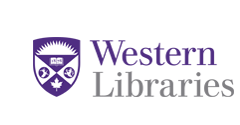Date of Award
2007
Degree Type
Thesis
Degree Name
Doctor of Philosophy
Program
Economics
Supervisor
Al Slivinski
Second Advisor
Ig Horstmann
Third Advisor
Jim Davies
Abstract
My thesis consists of three papers in the fields of public economics and politi cal economy. The papers share common ground to the extent that all of them constitute applications of game theory to economic issues relating to the public provision of goods. More specifically, Bayesian Nash equilibria are applied to study a game of private public good provision in the first paper and to study is sues of accountability in public good provision in the other papers. The papers are presented in five chapters. The first chapter introduces the thesis. The sec ond, third, and fourth chapters present the three papers, and the fifth chapter concludes. The first paper is partly motivated by Andreoni’s suggestion that account ing for the widespread participation in charitable giving requires an appeal to warm-glow type motives. Ig Horstmann and I seek to provide a model of widespread giving without appealing to warm-glow type motives and add to the literature on public good provision with private information. Studying a one- shot, simultaneous move, discrete public good game we find that any project may be realized if the population is large enough, that individuals may con tribute to failed projects in equilibrium, and that the fraction of the population contributing approaches a positive constant as the population gets large. The second paper provides a theory of the incidence of unified and divided government. I study a stylized model of a political system with separation of executive and legislative powers. In an environment in which the voter is iii imperfectly informed about a budgetary parameter and with respect to politi cians’ types, the voter’s election choices on the eve of two periods determine the form of government. An equilibrium outcome of divided government im plies that the voter trades in the uncertain prospect of more efficiency in policy making for accountability. The model’s comparative statics help explain the observed regime shift in the prevailing form of government in the U.S. at the federal level. In particular, the model links the increased frequency in divided government observations during the latter half of the last century to the con temporaneous increase in government spending. The third paper investigates the effects of two alternative interregional transfer systems, an occasionally constitutionally enshrined principle of fed erations, on political accountability at the provincial level. A two-period, two- province agency model of asymmetric information is studied. In equilibrium provincial reelection rates are higher in the rich than in the poor province, and reelection rates across provinces are higher in the good than in the bad state of the world. Depending on the state of the world, a reduction in the scope for graft may increase or decrease reelection rates. While stronger in the rich province, the direction of the effects is the same across provinces. In con trast thereto, variations in the vertical fiscal gap and changes in the degree of interregional redistribution imply that reelection rates move in opposite direc tions across provinces. There is some evidence that voters are better off with a federal government engaging in provincial public good delivery than with a federal government writing cheques to provincial governments.
Recommended Citation
Reich, Otto F.M., "ESSAYS IN PUBLIC ECONOMICS AND POLITICAL ECONOMY" (2007). Digitized Theses. 5085.
https://ir.lib.uwo.ca/digitizedtheses/5085

